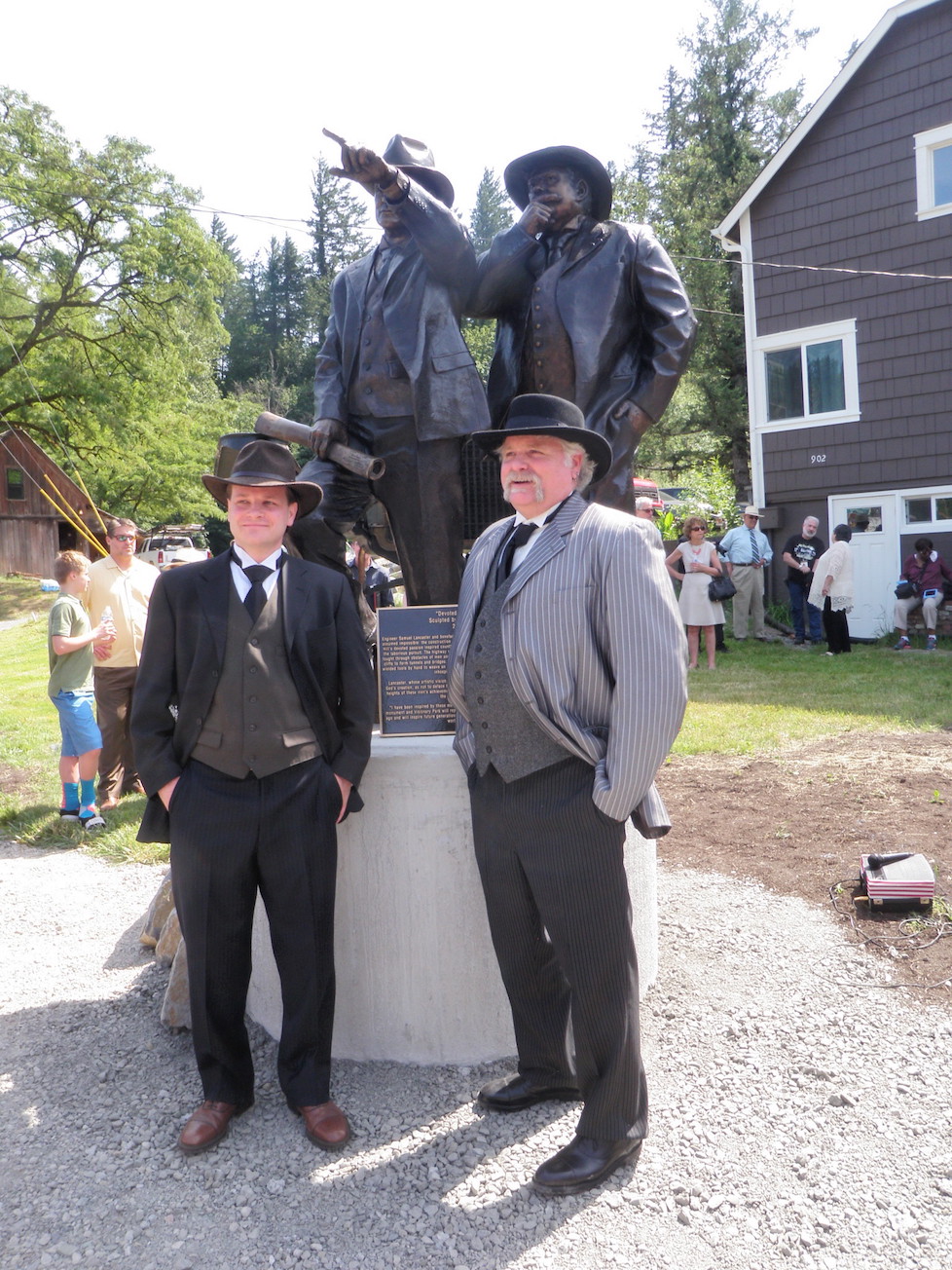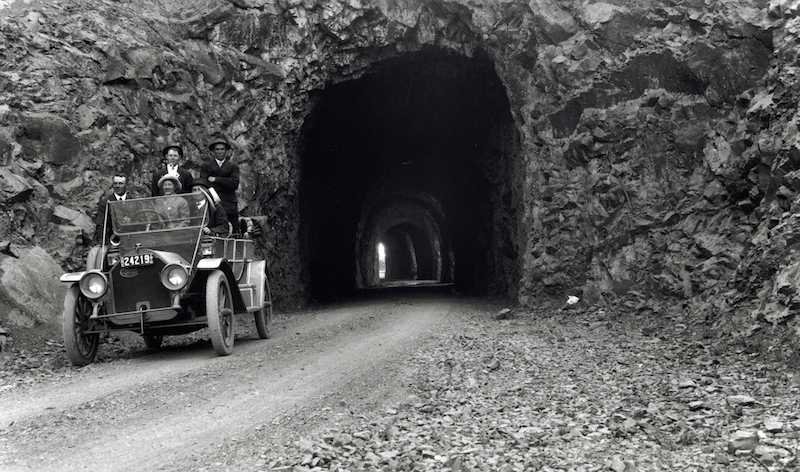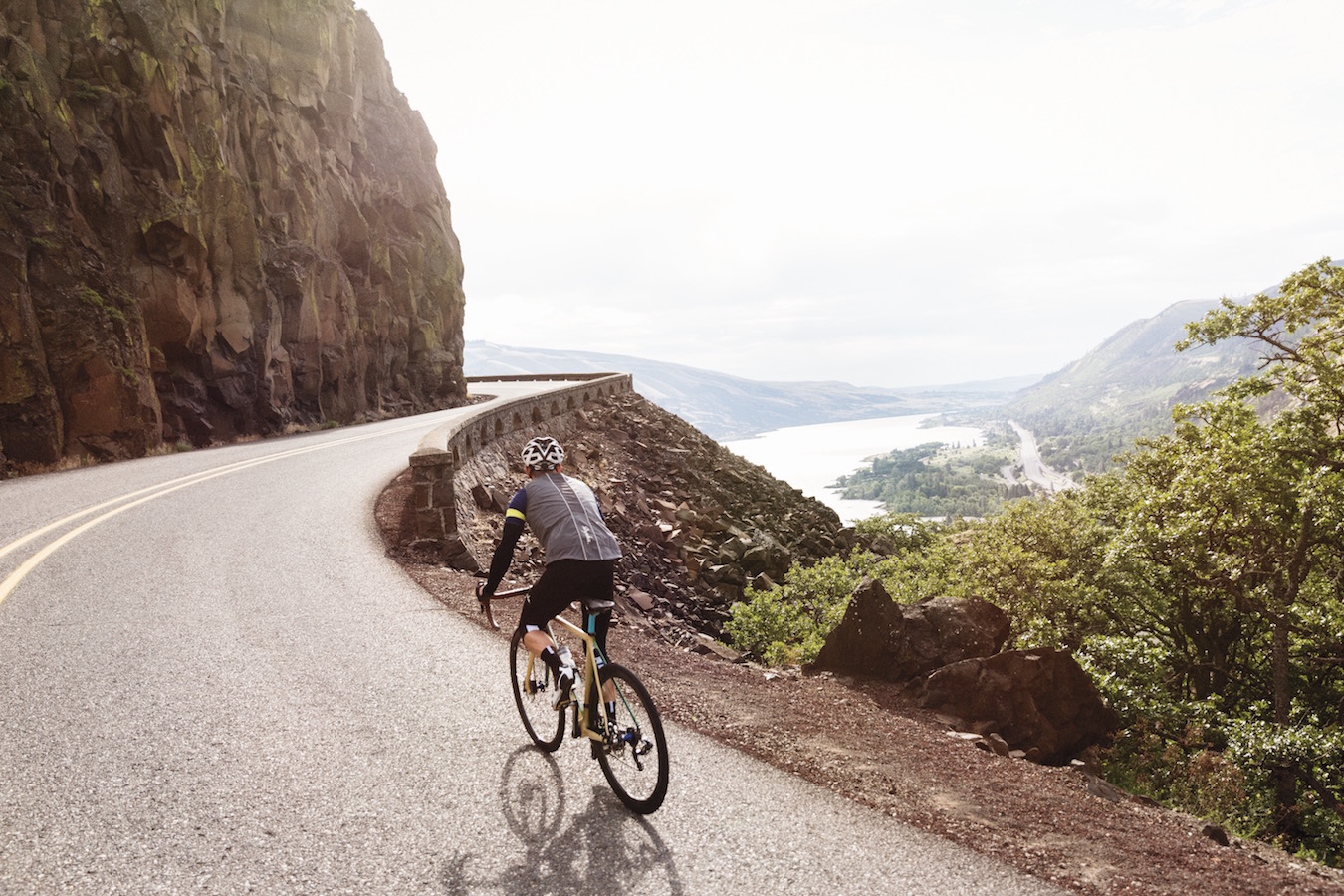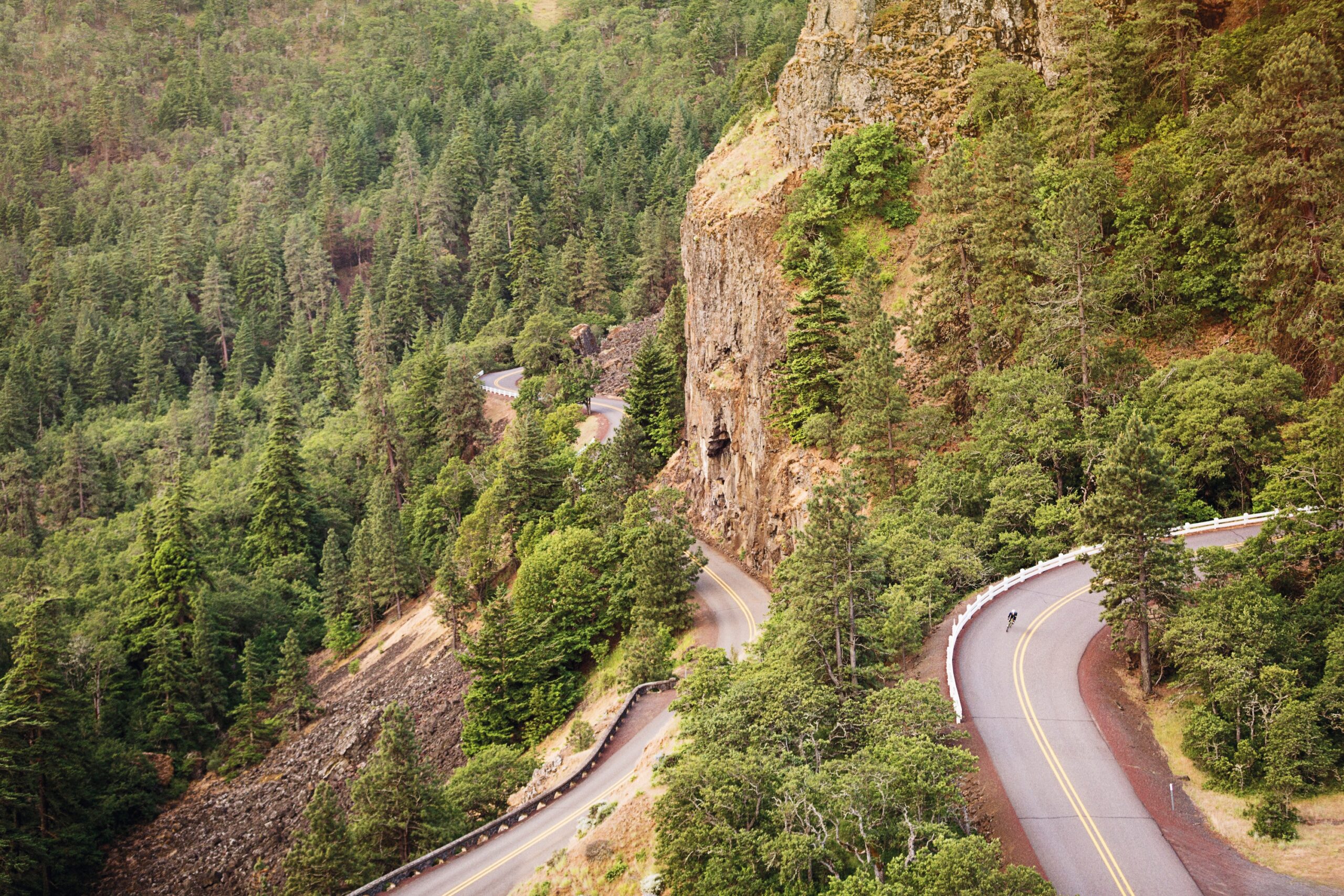The Historic Columbia River Highway just turned 100 — a milestone worth celebrating for Oregon.
How do you sing “Happy Birthday” to a beloved Oregon highway?
When the road in question is the newly restored Historic Columbia River Highway (HCRH), and the birthday in question is its 100th, you’d better strike up a literal band. And while you’re at it, call in the trains, the cannons and a fleet of classic cars.
During last summer’s HCRH centennial celebration, visitors traveled via special train from Portland’s Union Station to the foot of Multnomah Falls, where they were greeted by old cars, firing cannons, period costumes, and Pink Martini’s Thomas Lauderdale, seated at a grand piano, belting out “Roll on, Columbia.”
From Troutdale to The Dalles, communities along the highway’s 73-mile stretch were celebrating, too: after three decades, a grand restoration of the highway was nearly complete.
As they refashioned its parts into a versatile state trail calibrated to serve a modern-day Gorge, project stakeholders looked for guidance to the highway’s creators, road-builder Sam Hill and landscape architect Sam Lancaster, and asked themselves, over and over, one question: “What would Lancaster do?”
 Models of Sam Hill and Sam Lancaster pose next to new statue of the duo.
Models of Sam Hill and Sam Lancaster pose next to new statue of the duo.
Think like Lancaster
For starters, he’d emphasize natural beauty, says Wayne Stewart, Chair of the Historic Columbia River Highway Advisory Committee: “He wasn’t looking to quickly get from Point A to Point B. He was looking at, ‘How do you go from beauty spot to beauty spot?’”
The Columbia River Highway was first envisioned as a scenic gateway to Eastern Oregon, zigging and zagging past broad panoramas and even through a windowed tunnel passing beneath Mitchell Point.
But things changed. In the 1950s, to make way for the efficient, low-lying Interstate 84, the Columbia River Highway was broken apart, that windowed tunnel blasted to smithereens.
The Columbia River Gorge was officially designated a national scenic area in the 1980s. In the decades since, stakeholders from the region, the state and beyond — including the Oregon Department of Transportation (ODOT), the Oregon Parks and Recreation Department (OPRD), the U.S. Forest Service, Hood River County, the State Historic Preservation Office and Travel Oregon — have contributed to the preservation, enhancement and reconnection of the severed highway.
 The East Entrance of the highway’s Mitchell Tunnel during construction
The East Entrance of the highway’s Mitchell Tunnel during construction
The finished continuous corridor will be equal parts useful and beautiful, says Stewart. Think of it as a reconnected strand of pearls, its razed portions turned into multiuse recreational trails and its drivable portions restored for vehicle use.
The reimagined highway could increase the Gorge’s recreation-related economic activity by 30 percent, and spreading those potential visitors across the region’s communities solves a very modern problem, notes ODOT Columbia River Gorge National Scenic Area Coordinator Kristen Stallman: congestion, particularly in the waterfall corridor.
During the centennial preparations, the Historic Columbia River Highway Collaborative formed to troubleshoot traffic solutions. Some were straightforward: low-cost safety improvements and encouraging off-peak visitorship. Others, like promoting more car-free visits, required smarter infrastructure.
In the summer of 2016, the Columbia Gorge Express shuttle began carrying visitors from Portland’s Gateway Transit Center to Multnomah Falls by bus, with a stop at Rooster Rock State Park.
In just 64 operating days, says Stallman, the service carried 15,000 visitors and countless bicycles to the Gorge. This summer, the shuttle will expand service, and could eventually carry passengers to Hood River or link up with the Mt. Hood Express.
More access options improve congestion, but the reconnected highway also holds promise for region’s smaller, lesser-visited communities — towns like Mosier, Oregon, pop. 405.
Reconnecting the Strand
Lancaster was a big proponent of the leisurely pace, notes Mosier City Manager Kathy Fitzpatrick.
“He was not building I-84,” she says. “He was building a road that would connect people using it with communities and natural scenery, and you can only do that at a very slow speed.”
In downtown Mosier, where the highway doubles as a main street, 33 businesses once stood. Today, just a few remain, but each year, more visitors are arriving via the restored highway, by bike, foot, car and even cross-country skis.
Mosier is developing an information kiosk and bike fix-it station to greet them, and Fitzpatrick hopes more private retail and recreational offerings will crop up, too.
 The Columbia River Highway is a favorite of wandering cyclists.
The Columbia River Highway is a favorite of wandering cyclists.
Similar visitor amenities are materializing in communities across the region, and Fitzpatrick is loving the shared sense of purpose: “For the first time since a lot of people remember — decades and decades, maybe even half a century — the Historic Columbia River Highway communities are working on a project together … and it’s building a great relationship of trust and sharing resources.”
The Gorge is definitely humming with collective energy, agrees Stallman, and that’s exactly the project’s aim: “We want them [the communities] to really reap the economic benefits, and to feel that this highway is their highway.”
Today, one final portion of the HCRH awaits reconnection — the tricky five-mile passage between Wyeth and Hood River where that old windowed tunnel once ran deep beneath Mitchell Point.
Rejoining the road will entail some creative reverse engineering, but a finished, fully connected highway capable of bringing folks face to face with the beauty of the Gorge region is finally in sight.
As for Lancaster? Stewart’s confident he’d be quite pleased: “I’m sure that he would be very proud to know that after 100 years, Oregonians still treasure his masterpiece.”



